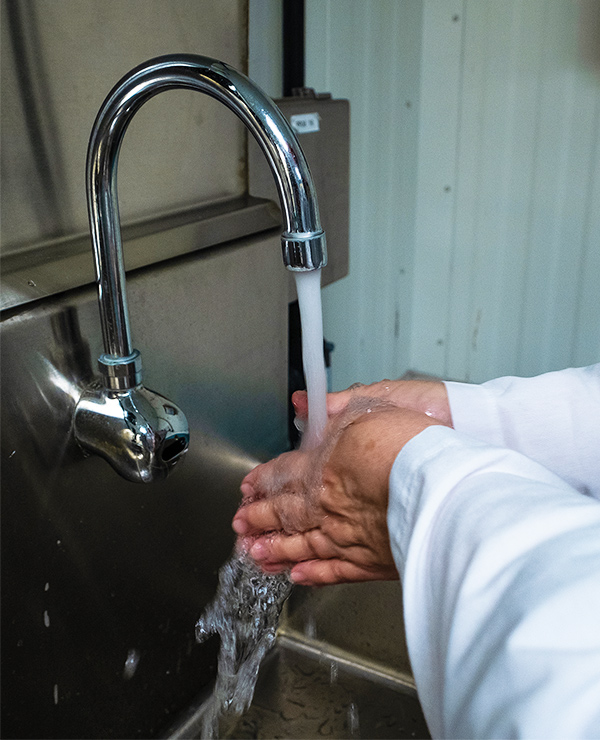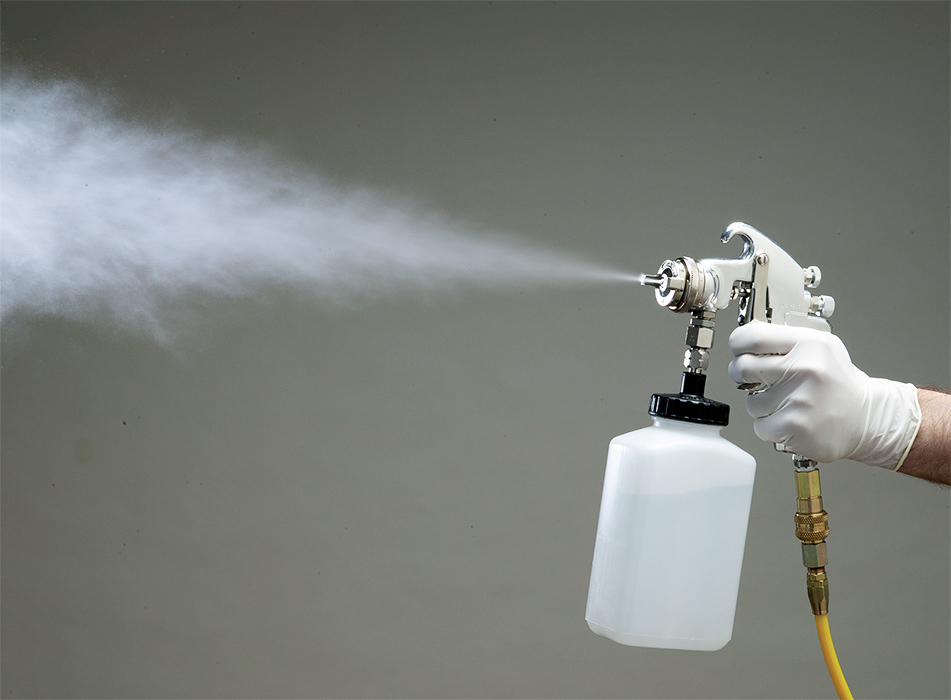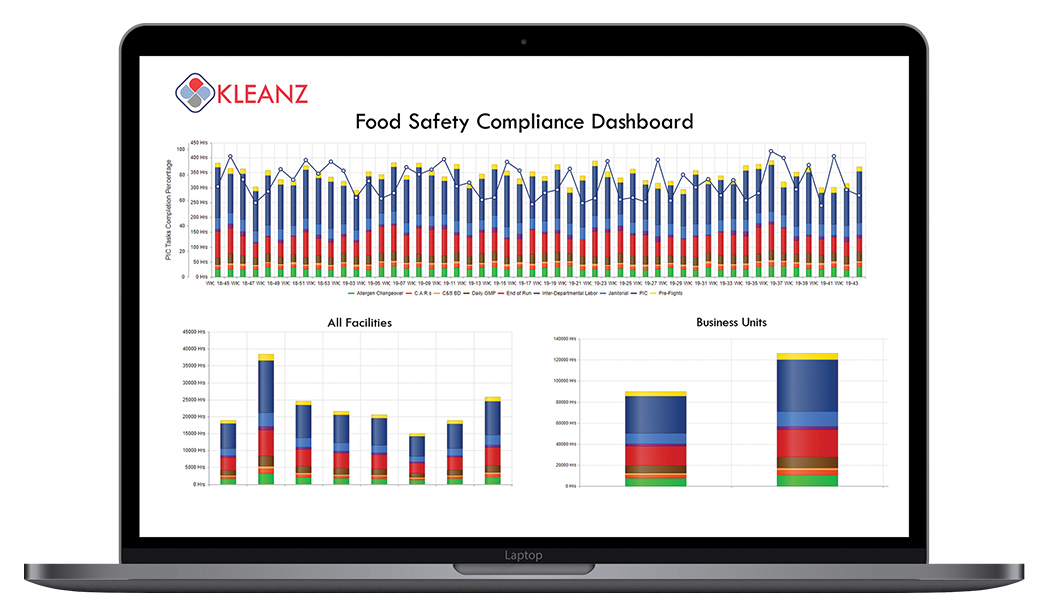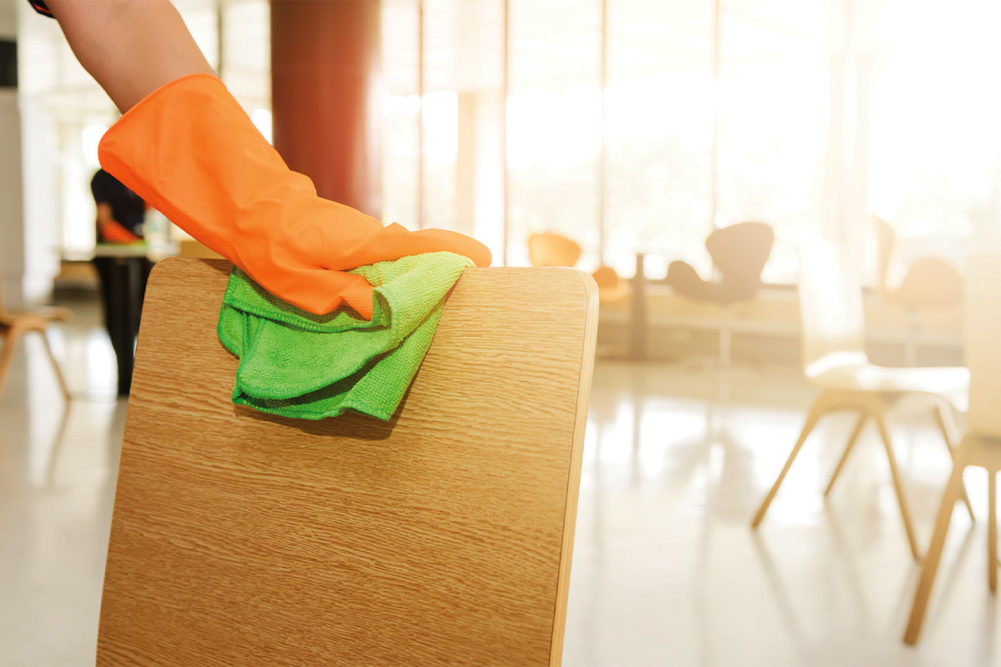This article was published in the June 2020 issue of Pet Food Processing. Read it and other articles from this issue in our March digital edition.
Along with every pet food and treat processor across the country, if not the world, BrightPet Nutrition Group, Lisbon, Ohio, manufacturer of premium pet foods, urgently implemented a long list of new procedures to help protect its employees against the invisible threat of COVID-19 and ensure the company’s continued ability to produce food for dogs and cats. Much of the battle within processing plants has become social distancing and fighting fomite spread – virus particles deposited on any inanimate object that can serve as a route of disease transmission.
The social distancing changes made by BrightPet to combat the pandemic include remote working where possible, reorganization of key operational tasks to increase social distancing, new interaction policies with outside parties such as delivery personnel and vendors, staggering start times and breaks to limit the number of employees in one location at a time, installation of plastic screens on the packaging lines to provide a barrier between employees, and splitting a manufacturing line into two shifts.
“Prior to COVID-19, this facility was able to package 24 hours’ worth of production on one shift,” said Travis Golladay, general manager, BrightPet. “Since the COVID-19 outbreak, we divided the packaging team and moved to a multiple-shift schedule to maximize social distancing.”
For a company the size of Mars, Incorporated, with 125,000 associates worldwide, implementing changes to prevent human-to-human spread of a virus is no simple task. According to Katie Evans, external affairs manager, Mars Petcare, Franklin, Tenn., the only associates going to Mars locations are those essential to running the factories, veterinary hospitals and a few other critical facilities.
For those associates, Mars has taken additional steps to protect them, including enhanced site cleanings, associate health screenings and procuring of even more health and safety supplies.
“We have introduced ‘social distancing’ in our facilities, which includes staggering shifts and start times and limiting gatherings to only those that are operational critical,” Evans said. “Where legally allowed, we have deployed health screenings and temperature checks for associates coming to work at our factories.”
Touch, clean, repeat
Dominating the list of measures taken to prevent the spread of COVID-19 are expanded sanitation protocols aimed at preventing person-to-person transmission of the virus. In addition to communicating with employees to re-emphasize existing sanitation and illness policies, including frequent and proper handwashing and practices regarding the wearing and changing of gloves and other sanitary gear, BrightPet has increased sanitation plant-wide. The company has enhanced protocols for cleaning and sanitizing its manufacturing plants and offices, including cleaning more frequently and implementing additional cleanings solutions, additional hand sanitizer stands in all of its manufacturing plants, and increasing the use of its BioMist portable alcohol misting system.
“The BioMist system is something that’s been part of our sanitation program for multiple years,” Golladay said. “It is used during our multiple weekly sanitation events. For the past several weeks we’ve ramped up the frequency of use of that system and have expanded its use into other areas of our facility, including offices and any common areas.”
Production remains steady at BrightPet’s three manufacturing facilities despite all these additional efforts.
“As our organization continues to work with improved procedures in place, we are happy to report that we have not experienced any significant delays in efficiency,” Golladay said.
From an operations standpoint, Plato Pet Treats, Fresno, Calif., has made similar modifications to its sanitation protocols at its treat processing facility in response to COVID-19.
“We have increased the frequency of sanitation of common areas from daily to a minimum of two times per shift,” said Aaron Merrell, president and chief executive officer, Plato Pet Treats. “These areas include locker and break rooms, restrooms and all door handles, as well as increased the usage and distribution of hand-sanitizing stations at every entrance/exit point, and before and after using the time clock.”
With the exception of additional hours required by the sanitation staff, Merrell reported these changes have had a negligible effect on production and overall plant efficiency and have not impacted the company’s standard food safety procedures.
“The heightened safety and sanitation methods implemented for COVID-19 allow the company to provide a superior standard for food safety procedures,” said Travis Golloday, BrightPet Nutrition Group.
Protocols to avoid cross-contamination is nothing new in pet food and treat processing plants, but intense focus on combating fomite spread takes plant sanitation to a new level. Doug Marshall, Ph.D., chief scientific officer of microbiology, Eurofins, Des Moines, Iowa, shared a list of the high risk touch points for transmitting micro-organisms from person to person that includes door handles, knobs, railings, chairs, tables, copiers, appliances, sinks, toilets, trash bins, soap, sanitizer, towel dispensers, personal protective equipment storage bins, employee lockers, vending machines, control panels, keyboards and log books.
“These transfer points cannot be eliminated so efforts must focus on minimizing their effect,” Marshall said. “Environmental monitoring programs (EMPs) can help processors validate their disinfection programs as effective against SARS-CoV-2 [the virus that causes COVID-19]. If the virus is found on employee touch points, this suggests that there is an unknown asymptomatic spreader or spreaders of the virus in the facility (which means current employee-fit-for-work screening practices aren’t working) and that the disinfection protocol may not be sufficient to eliminate virus from those surfaces.”
Lending a hand
With the sudden adjustments to sanitation standard operating procedures (SSOPs), processors have turned to suppliers for help managing the addition of the many new protocols and the volume of cleaning supplies the new procedures require. Non-production areas have become just as important as production areas, in terms of the need for cleanliness, and are being treated as such.
“It is more important than ever to document the COVID-19 additional sanitation and detection being done in the plant in addition to normal food safety documents,” said Robert Burgh, president, Nexcor Food Safety Technologies, Buford, Ga. “The documentation of the COVID-19 tasks being completed ensures that the appropriate measures are being taken for worker safety in the plant.”

“Companies that survive this outbreak will remember how easily an invisible risk can take its toll on a workforce and will alter protocols accordingly,” Burgh said. “The real opportunity for improvement is within food safety, not just sanitation. Cleaning protocols are important but mitigating overall risks to food safety company-wide will have a more profound impact in the long term. This includes ensuring that food safety execution is free of gaps and documentation has integrity that can be reviewed for informed, decisive decision making.”
Sourcing the sanitation supplies needed to meet the increased use and guard against any future shortages is also a challenge. Brian Wood, director of HydriPet Ingredient and Sanitation Solutions for Hydrite Chemical Co., Brookfield, Wis., said some processors are increasing the sanitation in common areas that would normally be cleaned once per day, which are now being cleaned three times a day or multiple times per shift. What typically is quarterly fogging with sanitizers has increased as well. Hydrite has been working with its customers to ensure access to anti-microbial products that are EPA-compliant as effective against COVID-19. The company is also providing testing and documentation services to ensure chemistries are compliant and effective.
“With tight supply, we are providing our customers with sanitizers and disinfectants as well as hand care products,” Wood said. “Working with our partners and shifting production, we have been able to supply our customers with minimal disruption.”
“It is more important than ever to document the COVID-19 additional sanitation and detection being done in the plant in addition to normal food safety documents,” said Robert Burgh, Nexcor Food Safety Technologies.
Additionally, Hydrite has created a preparedness package to help customers reduce COVID-19 risk and support them should they have a positive case occur in their facility.
Paul Claro, president and chief executive officer, Douglas Machines, Clearwater, Fla., has seen an increased interest in automating washing tasks as the focus has shifted in manufacturing environments to include not only surfaces and items that come in contact with product during processing but also anything in the plant that humans touch or use regularly.
“With sanitation so critical at this time, there is more focus on not just the tubs or trays used for transporting products but now also for the conveyer belts holding those tubs that employees may touch or inadvertently contaminate,” Claro said. “We’ve had more interest in our conveyor belt cleaning systems as well as clean-out-of-place (COP) parts washers, vat/bin washers and barrel, drum and garbage can washers to automate the washing and sanitizing procedures in the plant.”
Sustainable changes
Woods believes some of the food contact and environmental sanitizing options available such as Peroxyacetic Acid (PAA) blends, Chlorine Dioxide and Silver Dihydrogen Citrate (SDC) are becoming of more interest to processors at this particular time, and may become part of a standard microbial control tool going forward.
Merrell sees a potential long-term benefit to the attention on person-to-person transmission of illnesses.
“Our hope and expectation is that hygiene standards will be permanently raised in the minds of our entire team,” said Aaron Merrell, Plato Pet Treats.
“Our hope and expectation is that hygiene standards will be permanently raised in the minds of our entire team,” Merrell said. “This would be expected to have long-term benefits in preventing future illnesses and lost time/sick days throughout our entire company, and hopefully in society at large.”
Moving forward, BrightPet recognizes that the heightened safety and sanitation methods implemented for COVID-19 allow the company to provide a superior standard for food safety procedures.
“We intend to continue implementing these plant sanitation protocols for the foreseeable future with the understanding some of them may become the new standard,” Golladay said. “We are working tirelessly to do what’s best for everyone who works within our plants and offices, and for all those who serve their pets our super-premium formulas.
Read more about pet food processing on our Operations page.




